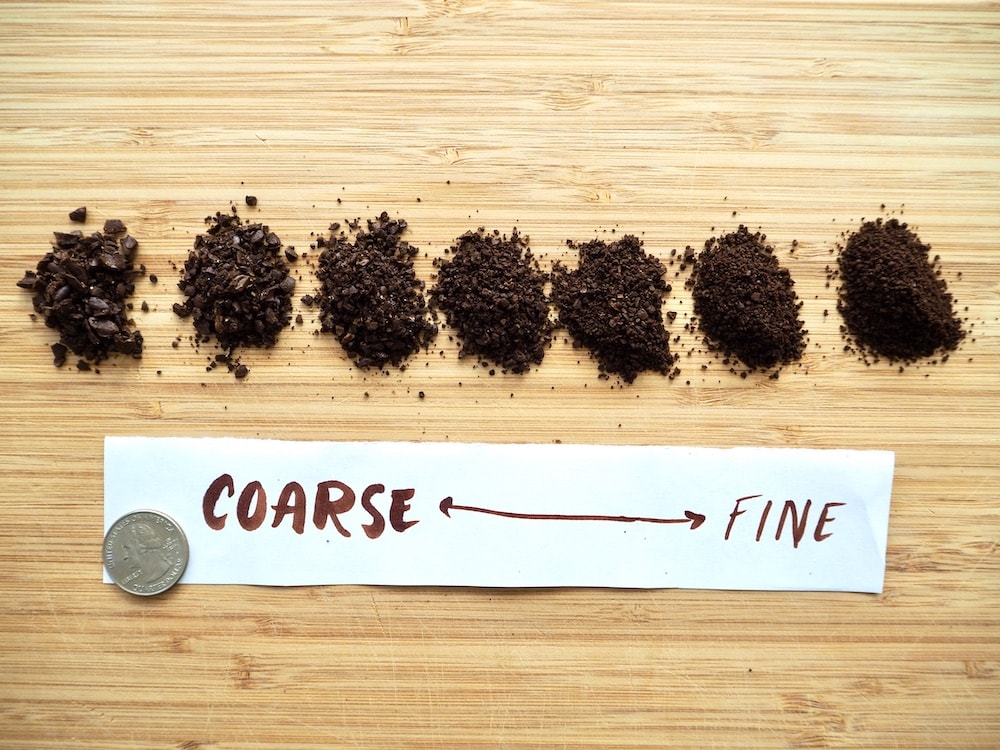
If you’re just getting deeper into coffee brewing, you may be feeling overwhelmed by grind size. What kind of grind is best for French press, espresso, or cold brew? You may be tempted to buy pre-ground beans instead of learning how to grind your beans at home. But read this first!
Don’t worry, you won’t need to resort to less-fresh coffee beans. Our coffee grind size chart has all of the information you’ll need to become an expert grinder. From the finest grind to the coarsest, we’ve put together all of the information you’re looking for. First, we’ll show you why you’ll want to grind at home, and then we’ll cover what each grind size looks like. Finally, we’ll show you which grind sizes work best for each brewing method! And stick around for our discussion of why grind size matters and a handy FAQ.

Why should you grind coffee beans at home?
When it comes to coffee flavor, freshness is king. No matter their roast or country of origin, to get the most flavor out of your beans, you’ll want them to be as fresh as they can be. This means making sure they’ve been roasted and ground as recently as possible.
As they come into contact with oxygen, coffee beans begin to lose flavor and become stale. For that reason, freshly roasted coffee has the best flavor within one to two weeks, while freshly ground coffee starts to lose flavor 15 minutes after grinding. Even if you’ve bought complex, gourmet beans and roasted them recently, if you grind them too far ahead, they may produce bland, uninterested cups of coffee. For the best flavor, grind your beans just before brewing them.
Another reason to grind coffee beans at home is that different types of coffee brewers require varying coffee grind sizes. We’ll get into the specifics a little later, but keep in mind that some brewing methods require very specific grinds that may be more difficult to buy at the store or may not come in your favorite variety of coffee beans. If you grind your beans at home, you can easily adapt the grind size of any beans from espresso to French press and back again.
- Much better flavor
- Fit your grind size to your coffee equipment
- Experiment with different grind sizes
- A bit more time-intensive
- Must have a coffee grinder
The 7 Types of Coffee Grinds:
There are seven major sizes of coffee grinds. Keep reading to find out what they are, what they look like, and what types of brewers they are best suited to.
For our comprehensive list of the seven coffee grind sizes, we’ve taken close-up pictures of each so that you can get an idea of the texture you’re looking for. For scale, we’ve added an American quarter, which has a diameter of 0.955 inches and a width of 0.069 inches.
1. Extra Coarse Grind
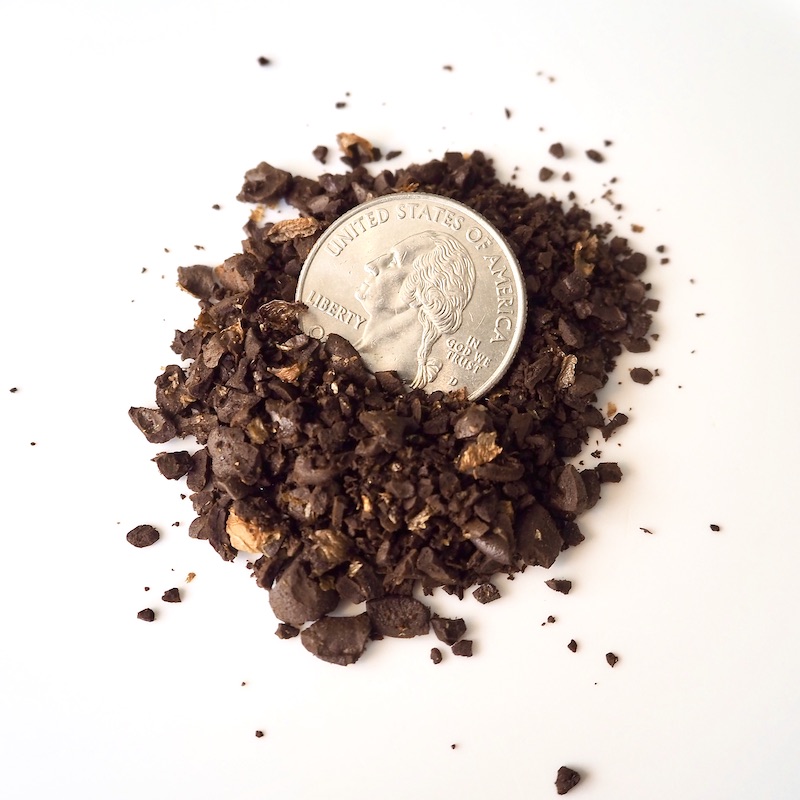
Extra coarse beans are only slightly ground, often using the largest setting on a burr grinder. They have a very rough texture, and you can still see the shape of the original beans.
This grind is best suited to cold brew and cowboy-style coffee (coffee boiled in a pan with grounds).
2. Coarse Grind
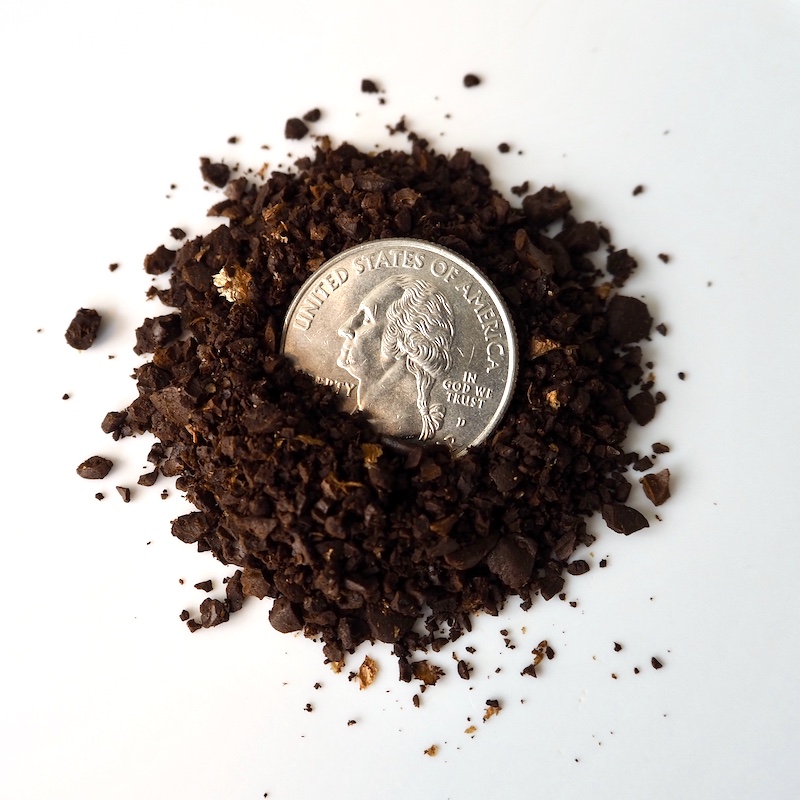
Coarse beans have a texture similar to Kosher or sea salt, with large, even chunks.
This grind is best for coffee cupping, French press, and percolators.
SEE ALSO: The Best Coffee You Can Buy Coarsely Ground
3. Medium-Coarse Grind

Medium-coarse beans have a texture like rough sand, between medium and coarse grind levels.
This grind works best in specialty brewers like the Café Solo or the Chemex.
4. Medium Grind
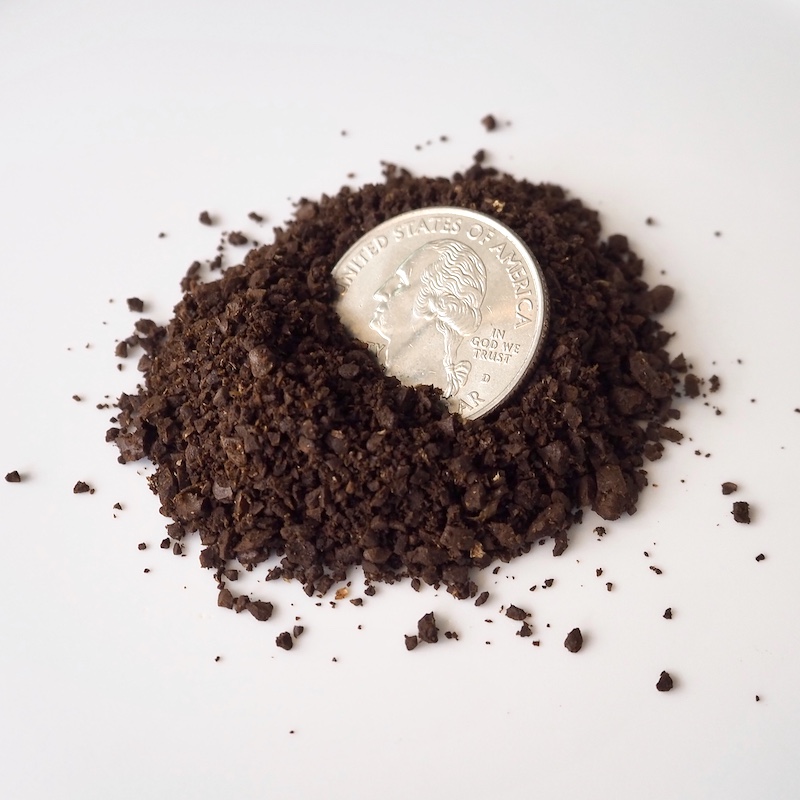
Medium grind is the most common grind size for pre-ground beans, with a texture like smoother sand.
This grind is great for drip coffee makers and siphon brewers. It will also work in an AeroPress if you let it brew for over three minutes.
5. Medium-Fine Grind
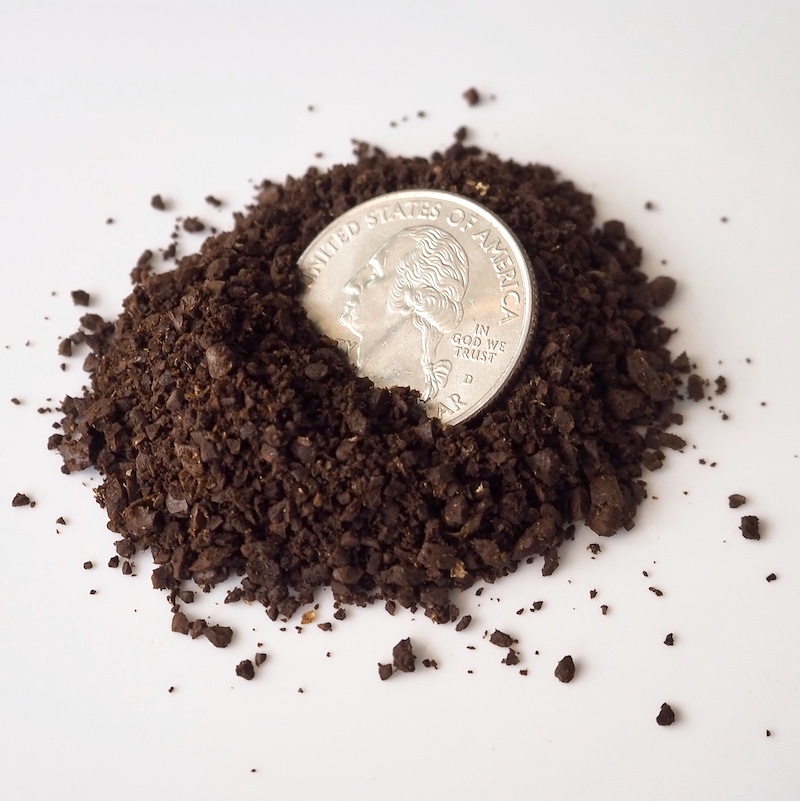
Medium-fine beans have a texture just a little smoother than sand.
This grind is the best for cone-shaped pour-overs, vacuum brewers, and AeroPress brewers with two to three minutes of brewing time.
6. Fine Grind
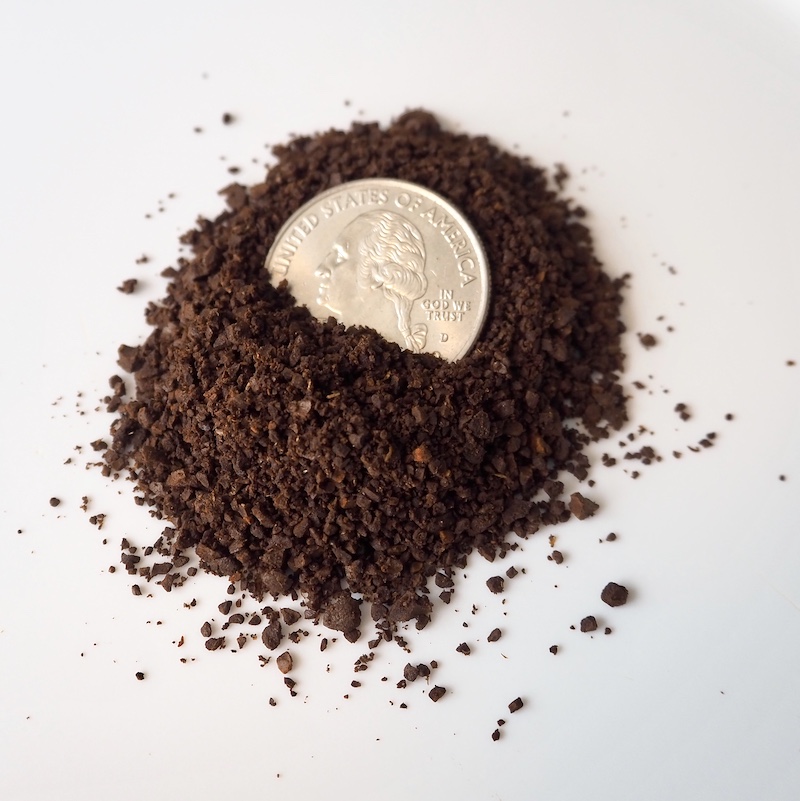
Finely ground beans have a very smooth texture, approaching powder. This type of grind is also easy to find in pre-ground bags and is often labeled as espresso grind.
This grind is necessary for espresso makers. It also works in an AeroPress with a short one to two-minute brew time.
7. Extra-Fine Grind
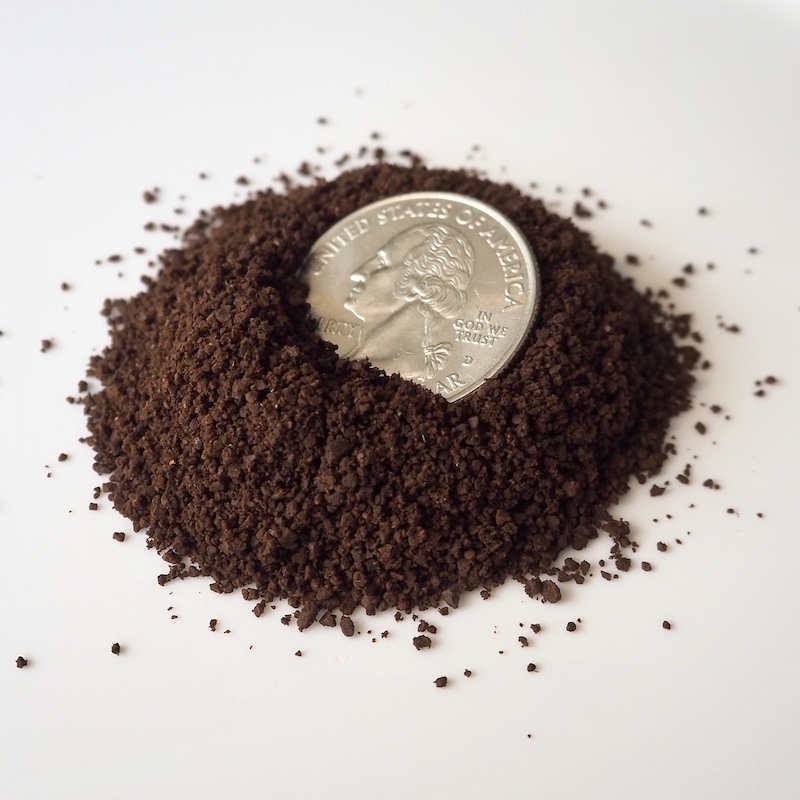
The extra-fine grind size has a texture like powder or flour.
Extra-fine grind is mostly used to make Turkish coffee and is sometimes called a Turkish grind.

What’s the best grind size for each brewing method? (Coffee Grind Size Chart)

A good rule of thumb when you’re deciding on a grind size is that the more coarsely you grind your beans, the more slowly they’ll impart flavor to the water. You may want to consider how your favorite brewing method works. When you pour water through grounds quickly, it needs to be able to pick up flavor quickly. If the water is going to sit in the grounds for longer, you’ll want larger grounds that impart flavor more slowly.
- Brewing methods like French press and cold brew involve water sitting with the grounds for at least a few minutes, so they call for coarsely ground beans so that you can avoid over-extraction.
- In the middle, you’ll find brewers like pour-overs and drip pots that allow water to sit with the grounds for a few seconds and therefore require medium to medium-fine grinds.
- On the other end of the spectrum, methods like espresso makers and Moka pots push water or steam through very quickly, so they need very fine grounds.
Why does grind size matter?
Grind size can affect the flavor and texture of your brewed coffee. It can mean the difference between delicious, flavorful coffee and tasteless, bland, or overly textured coffee.
Texture
If you’ve ever had a silty, bitter cup of French press coffee, you know that using the wrong grind size can affect your brewed coffee. When you brew with a metal filter, like a French press, percolator, or espresso machine, grinding too finely can cause grounds to move through the filter’s perforations and make your brewed coffee salty, cloudy, and overly textured.
Cloth and paper filters have tighter weaves, so you’re unlikely to get any grinds coming through even if you grind very finely, but you may notice that your coffee takes much longer to brew.
Flavor
To get the best flavor from your beans, you’ll want to extract them well. Extraction is when the water moves through the grounds, picking up coffee’s distinctive flavors and caffeine. When brewing, you want to avoid over-extraction and under-extraction and instead stay right in the middle of good extraction.
What’s under-extraction?
Under-extraction is when the water can’t pick up enough flavor as it passes through the coffee grounds. This can happen if you use the wrong filter or water temperature, but the biggest factor in under-extraction is coffee grounds that have been ground too coarsely.
Under-extracted coffee has a weak, bland flavor and tastes acidic and slightly sour or salty.
What’s over-extraction?
Over-extraction is when the water picks up too much flavor as it passes through your grounds. It’s generally caused by coffee beans that are too finely ground.
Over-extracted coffee is bitter and overpoweringly strong, with no complex flavors.
Types of Grinders
To get the perfect grind size, you’ll need a great grinder. There are two major types of coffee grinders, blade, and burr. Blade grinders spin metal blades in a propeller-like motion to cut up coffee beans. To adjust the grind size in a blade grinder, you grind for more or less time, and the longer you grind, the finer the grind size will be. Blade grinders are less expensive but also less precise and produce more inconsistent grounds.
Burr grinders work by crushing coffee beans between spinning burrs. They generally have a range of grind size settings, which alter the distance between the burrs. Burr grinders can be manual or electric and are typically more expensive, but produce more consistent grounds.
Are you interested in learning more about grinders? Take a look at our in-depth guide to the two major types.

Best Coffee Grind Size FAQ:
What’s the best French press grind size?
A coarse grind is best for a French press brewer, with a chunky texture similar to sea salt. This will keep your coffee from becoming over-extracted or overly silty.
What’s the right grind size for cold brew?
Cold brew works best with an extra coarse grind size, typically the largest setting on a burr grinder. This is because it brews at a low temperature over a long period of time.
What’s the perfect Chemex grind size?
The Chemex brewer works best with a medium-coarse grind level, which has a texture like coarse sand.

What’s the ideal AeroPress grind size?
For a great cup of AeroPress coffee, you’ll want a grind size between medium and fine, depending on how long you let it brew. For a three-plus minute brew, use medium-sized grounds. For two to three minutes, use medium-fine grounds. For one to two minutes, try fine grinds.
What’s the best grind size for pour-over coffee?
Pour-over coffee brews best with a medium to medium-fine grind size.
What’s the most optimal espresso grind size?
For espresso, you’ll want finely-ground coffee beans. Espresso pushes water through beans quickly, so you’ll want fine grounds in order to produce a strong shot.
What’s the perfect drip coffee grind size?
Drip coffee makers typically work best with a medium grind size, similar to smooth sand.
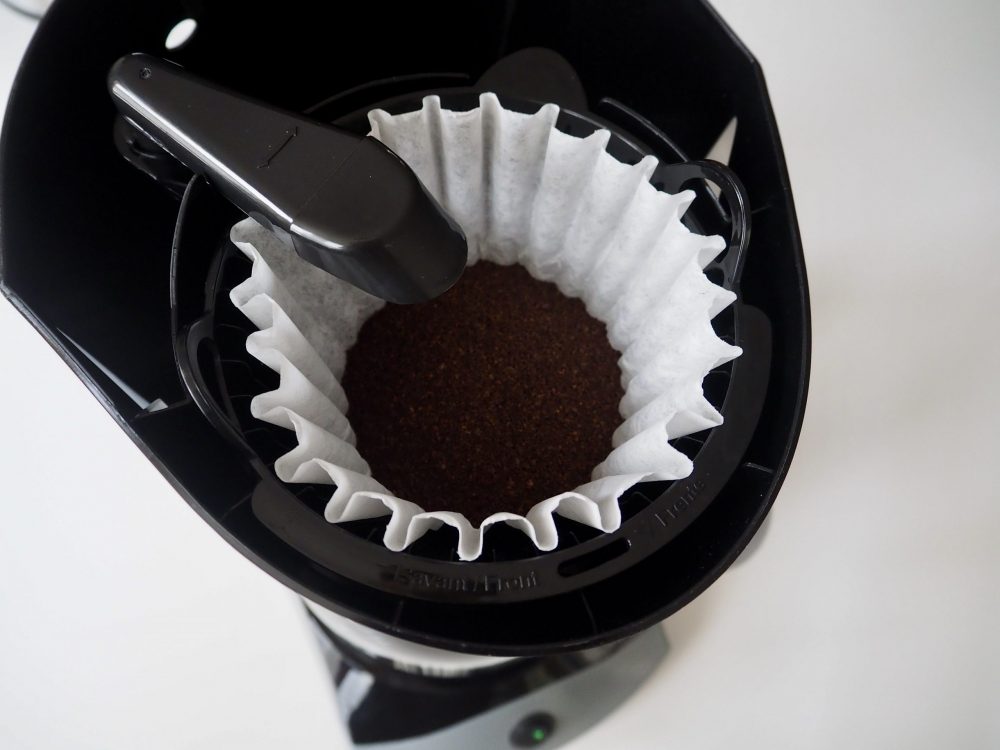
Which grind size works best when using a Moka pot?
Moka pots, similar to espresso makers, call for a fine grind size.
How often should you grind coffee to keep it fresh?
For the freshest flavor, grind your coffee every time you brew coffee. Coffee begins to lose flavor about 15 minutes after you grind it, so to keep it fresh, you’ll want to grind just the amount you need right before brewing.

Final Thoughts
Learning how to grind your beans doesn’t have to be difficult. With the help of this comprehensive guide, you can grind your beans to just the right size with confidence. From extra coarse to extra fine, there are quite a few grind sizes, and grinding your coffee beans correctly will set you up to brew a delicious cup of coffee. We hope this coffee grind size chart has answered all of your questions and helped you brew the best possible coffee!
MORE GREAT READS:
- How To Grind Coffee Beans Without a Grinder
- 10 Best Burr Coffee Grinders — Top Picks & Reviews
- Why Do You Need a Ground Coffee Sifter – The Kruve Sieve Set
Table of Contents
- Why should you grind coffee beans at home?
- The 7 Types of Coffee Grinds:
- What’s the best grind size for each brewing method? (Coffee Grind Size Chart)
- Why does grind size matter?
- Best Coffee Grind Size FAQ:
- What’s the best French press grind size?
- What’s the right grind size for cold brew?
- What’s the perfect Chemex grind size?
- What’s the ideal AeroPress grind size?
- What’s the best grind size for pour-over coffee?
- What’s the most optimal espresso grind size?
- What’s the perfect drip coffee grind size?
- Which grind size works best when using a Moka pot?
- How often should you grind coffee to keep it fresh?
- Final Thoughts















